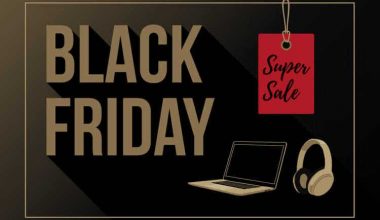Those who have heard of retail arbitrage have most certainly heard of it in reference to Amazon reselling. Many individuals see retail arbitrage as a quick method to make easy money, but there is much more to making retail arbitrage a viable business strategy.
This post will explain what retail arbitrage is, its benefits, the app and how to get started with it.
What Is Retail Arbitrage?
Retail arbitrage is the practice of purchasing goods from traditional brick-and-mortar establishments, such as outlet stores and merchants, and reselling them in another market, such as Amazon, for a higher price than you paid for them. Retail arbitrage is simply getting a good deal on an item, selling it for more than you bought for it, and pocketing the difference.
This is not the same as trading arbitrage, which is the process of purchasing and selling two related stocks or other forms of assets in different marketplaces at different prices in order to profit from the difference in expenses.
Benefits of Retail Arbitrage
Online and retail arbitrage has grown in popularity for a variety of reasons. Let’s look at three of the most important advantages of retail arbitrage.
#1. Low overhead and entrance obstacles
You don’t need a lot of money to get started with retail arbitrage. If you sell fewer than 40 goods per month as an individual seller on Amazon, it costs $0.99 per item sold, or $39.99 if you sell more than 40 products per month and wish to offer products in restricted categories. There are also fulfillment fees to consider, but they are not prohibitively expensive.
When it comes to retail and online arbitrage sourcing, it’s also really simple to find low-cost things to sell. For example, by taking advantage of merchant deals, you can obtain things at inexpensive costs and then resell them once the sale has expired. Low expenses also mean you won’t have a lot of money locked up in inventory if you can’t sell things right away.
#2. Low dangers
Arbitrage selling is a low-risk business venture. Because you don’t have a large inventory, if things don’t sell, you can turn to marketplaces like Poshmark, LetGo, and Craigslist.
#3. Countless product possibilities
You don’t have to specialize in a specific category or product when it comes to online and retail arbitrage. You can surely sell a fantastic product at a great price if you discover it at a great price.
Getting Started with Amazon Retail Arbitrage
You now understand that retail arbitrage can make you a lot of money if done correctly. How do you do it correctly? Let us begin from the beginning.
#1. Set up an Amazon seller account.
The first step toward launching your Amazon business is to open an Amazon seller account. When making an account, you’ll have two options; let’s look at how they differ and how you may use each one to your advantage.
1. Account for a single seller
Individual accounts are free to create, but you must pay a $0.99 commission on each sale you make on Amazon. In addition, there is a 15% consolidated charge on those sales. You can only sell 40 products as an individual vendor.
Creating an individual account is ideal if you do not intend to sell more than 40 products and do not wish to offer products from restricted categories.
2. Accountancy expertise
A professional account will cost you $39.99 per month, plus some referral fees and changeable closing fees. You won’t have to pay Amazon a set fee for each item you sell, and you can list up to 40 products on the marketplace.
In addition, you can sign up for FBA (Fulfillment by Amazon). If you’re an FBA seller, all you have to do is ensure that your products arrive at Amazon’s warehouse. Amazon handles storage, packaging, shipping, and customer service. This is not free, but it is well worth the money. FBA sellers can also receive Prime delivery and have a better chance of winning the Buy Box.
FBA allows merchants to outsource their shipment and customer care to Amazon, ensuring quality shipping and service!
#2. Product sourcing
Product sourcing for retail arbitrage is similar to thrift shopping. You’re looking for a terrific price on a product with a high profit margin. The first thing to remember is that retail behemoths like Walmart and Target compete with Amazon. Prices will always be competitive, and huge retail chains provide excellent offers.
To get the best pricing, seek for things during clearance sales. Just make sure the things aren’t harmed. Quality cannot be compromised.
But don’t just buy everything on sale. Keep an eye on how the product is selling on Amazon and keep an eye on its price. Before deciding on a product, make sure you include Amazon fees and shipping. With the Amazon seller smartphone app, you can scan product barcodes in-store to see real-time prices and product listings!
#3. List your goods and begin selling it.
Once you’ve identified the product you want to sell, list it on Amazon and begin selling! When it comes to boosting sales, optimizing your product listing goes a long way, so if you’re wondering how to get the most of your listing, read this complete advice.
To remain competitive, continuously altering your prices. Amazon’s Buy Box accounts for a significant portion of sales. Every seller wants to win the Buy Box, therefore there will undoubtedly be a battle for that seemingly insignificant yellow button!
The Benefits of Amazon Retail Arbitrage
Whatever method you choose to sell on Amazon, there will be benefits and drawbacks. How can you know if this is the best way to sell on Amazon? Let’s look at the advantages of retail arbitrage.
#1. Low entry cost
The nicest part about retail arbitrage is that you can get started with as little as $100 to $200. Because you are not purchasing huge amounts of your goods directly from a source, you will not lose as much money if your product does not sell well.
#2. Short-term profits
Retail arbitrage is a terrific approach to make rapid money. You’re not aiming to establish a brand or a long-term relationship with a provider. If you’re just getting started selling on Amazon, this is one of the easiest methods to generate money.
While retail arbitrage is an excellent way to generate quick money, it is not a scalable business concept. Retail arbitrage, like any other enterprise, is fraught with danger.
#3. Lower profit margins
When you resell a product, your margins are bound to be smaller than if you sourced it directly from a provider. If you want to grow your Amazon business, you should always source directly from manufacturers or suppliers.
#4. Brand guidelines
Amazon goes to considerable measures to ensure the safety of its customers. Brand Registry Protection on the platform allows private labels and brands more control over their product listings. If you offer a brand-restricted product without authorisation, Amazon may flag your listing. As a result, retail arbitrage is dangerous. Before listing your goods, make sure it isn’t already in the brand registry. If you are an unlicensed seller, your account may be terminated!
What is the difference between arbitrage and Dropshipping?
Retail arbitrage is simpler to set up and profit from, but it has less long-term stability. Wholesale dropshipping may need more time and work to get started, but it allows for a more sustainable business in the long run.
Which Retail Arbitrage Apps Are the Best?
When shopping for products in your local stores as an Amazon seller utilizing retail arbitrage as your sourcing method and sales ranks, you need a dependable scanner app.
The top 5 barcode scanner retail arbitrage apps for checking prices on Amazon or eBay are listed below.
#1. App for Amazon Sellers (Available on: Google Play, iTunes, and Amazon)
The Amazon Seller app is a free app provided by Amazon that you can begin using as soon as you register as a seller on the marketplace. Once you have your seller account, simply download the app and you can begin selling and scanning things on Amazon right away.
The Amazon Seller app and free tools can assist you in discovering information such as Sales ranks and more:
- Amazon’s official category
- Fees for FBA, product price
- Profit estimates
- Number of sellers in total
- Bestsellers in order
- Sales Position
- …and a lot more.
However, the Amazon Seller app does not display custom fees or taxes, so you can only receive an approximation of profitability.
Furthermore, because the Amazon Seller app does not interface with eBay or Google, it can be difficult to locate information on product price history, sales history, and trends.
#2. Scoutly (Available in Google Play, iTunes, and ASellerTool)
This app has a fantastic feature that allows you to choose between live search and local database mode. So, if you ever find yourself in a wifi/reception dead zone, you won’t have to stop scanning products.
The app includes all of the information seen in other scanning apps, such as sales rank, as well as:
- FBA costs
- Sales Position
- Product Classification
- Image
- Weight
- Title
- … and so on.
Although this information on FBA and sales rank, among other things, is available on all other scanners, this app’s data/wifi independence sets it apart from the competition.
#3. Scoutify App (Available on Google Play and InventoryLab)
This is a superb retail arbitrage app with many excellent features. However, there is one huge drawback: in order to use the retail arbitrage app, you must sign up for the complete package.
Scoutify gives you what you pay for, and many fantastic features will propel your career as an Amazon retail arbitrage merchant.
Because of its high price, this retail arbitrage app may not be appropriate for beginners. However, if you are a seller with a significant monthly volume, this is the retail arbitrage app for you because it will provide you with the following advantages:
- Third-party apps such as Keepa and Camel
- The app takes into account taxes to provide a more accurate final price.
- It enables Bluetooth scanning.
- A shopping list maintains track of your purchases.
- You will have access to tools for sourcing, reporting, and bookkeeping.
#4. Profit Bandit (Available on iTunes and SellerEngine)
This scanning tool, like the one mentioned before, requires a paid subscription. However, it is inexpensive and has fantastic features that allow you to investigate things in real time.
This means you’ll be able to make the most educated judgments possible because you’ll have the most up-to-date information at your disposal.
Profit Bandit is an amazing retail arbitrage app for low-volume merchants trying to enhance their profitability due to its inexpensive cost.
#5. Scan Power (Available on Google Play, iTunes, and ScanPower)
Scan power is more expensive than the other apps on this list. However, it also offers capabilities that will put you ahead of other Amazon retail arbitrage sellers. It includes the most up-to-date and accurate live data from the platform.
This is the app for you if you work best while on the road. It has several amazing capabilities, such as delivering information to your desktop while you’re on the go so you can review it later.
It also allows you to produce 2-D barcodes, which is useful because the barcodes are already present when you ship your things, giving you one less thing to worry about.
What Is the Average Profit Margin for Retail Arbitrage?
With retail arbitrage, your profit margin will vary based on how much you pay for the things you sell on Amazon and how much people are prepared to pay for them.
Many retail arbitrage merchants set a hard standard of 10 to 30%. It’s a good idea to utilize the exact figure as a rule of thumb to help ensure your success as a novice. Only source retail arbitrage products that are 10 to 30% less expensive than their minimum cost.
How much money do you need for retail arbitrage?
The nicest part about retail arbitrage is that you can get started with as little as $100 to $200. Because you are not purchasing huge amounts of your goods directly from a source, you will not lose as much money if your product does not sell well.
How much money can you make doing retail arbitrage?
Experienced retail arbitrage dealers that have developed their business to over $10,000 dollars every month are not uncommon.
Taxes Retail Arbitrage Guide
There are a few things you should know about filing taxes as a retail arbitrage vendor. To begin, you must keep track of sales tax in order to sell on Amazon. This is the tax on items that are not considered “essential.”
This online arbitrage tax differs by state, and you should examine the regulations in the state where you conduct your retail arbitrage firm.
When monitoring sales, you should also pay attention to your deductibles. An Amazon retail arbitrage seller, like any other self-employed person, can claim deductibles for education fees, home office expenses, and other items. Again, save any receipts relating to your online activities.
Conclusion
Many people begin with online and retail arbitrage as a simple method to supplement their income, and they appreciate the benefits of having a side business.
There are, nevertheless, numerous success tales. Many people have gone into retail arbitrage and made more than just a fast cash; they have created careers out of it. A good income is feasible with the correct retail arbitrage approach and enough time to invest.
Once your arbitrage business is up and running, you may find yourself having more retail inventory than you started with and more orders to fill. If so, retail management software can assist you in managing the processes involved in tracking and managing your merchandise.
Related Articles
- AMAZON AUTOMATION: Overview, Scam, Investments, Store
- How To Save Money Fast: 10 Best ways to saving money In 2022
- Quant Salary: A Complete Breakdown & How to become a Quant
- Machine Learning: All You Need to Know about Machine learning
- Retail Investors: How To Become One






